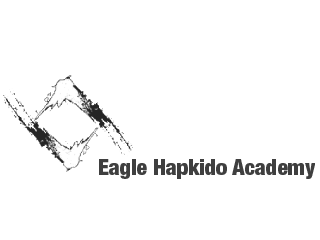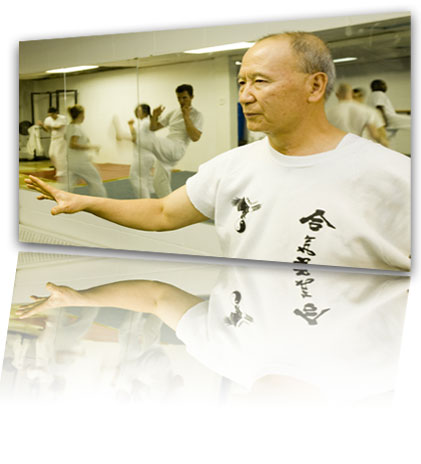Toronto Hapkido Training
All Hapkido martial arts classes in Toronto are open to both men and women.
Eagle Hapkido prefers to educate students using a holistic approach to the martial art. This means that a number of techniques are taught with an analysis of their use and execution as well. It is believed that teaching a single technique promotes narrow-mindedness, which goes against the philosophy of Hapkido (circle, flow and harmony). Then, it is up to the student to practice these techniques and gain a true understand through practical experience.
A specific level of maturity is required, as Master Hwang instructs through guidance rather than the formality of a regimented class. Therefore, children may join once they have reached between 10-15 years old.
For a conducive learning environment, a certain level of etiquette is vital. However, Master Hwang does not believe in the idolization of the teacher, as it creates an unnatural gap between the instructor and student. As a result, students are encouraged to question the techniques taught in an open discussion when the time is appropriate.
Hapkido Uniform
Students must wear a pair of white pants, white shirt and a belt to signify rank. Training is bare foot, however flat “martial arts” shoes may be worn instead.
Hapkido Training
At Eagle Hapkido, Oriental medicine profoundly influences training. Healing is a vital aspect of the martial arts, but too many schools focus entirely on the opposite: hurting and inducing pain. Hapkido is about merging the positive and negative, which is manifest as healing at one end of the spectrum and combat on the other.
One must understand both. To understand the outside, one must understand the inside. To understand a high kick, one must understand a low kick. This is martial arts philosophy and the basis of yin and yang.
Eagle Hapkido does not teach a single technique alone; focus is on the development of martial arts philosophy as well. It is vital that with each technique, the purpose for executing it is understood. Further, one should be able to adapt the technique according to the situation and their ability.
Punching
Punching is a basic technique that evolves with training and ability. The ideal is taught to the novice, but individuality will prevail upon advancement. The essence of punching lies in where the energy is spent; while many martial arts focus on the beginning and/or end of a punch, Eagle Hapkido believes in spending energy throughout the punch, with a focus on the end. With this philosophy, be it knife hand, arrow hand or etc., any hand strike can be delivered effectively and with devastating consequences.
Kicking
Single kicks, double and triple kicks are taught. These may be executed with one foot on the ground or both feet in the air (jump kicks). Sweeps are taught as well.
Kicking follows the same premise as punching.
Joints
In Oriental medicine, it is believed that cosmology has a direct relationship with our bodies. For example, there are 365 joints to correlate with the 365 days of the year. As a result, the practice of joint manipulation is essential for students to learn at Eagle Hapkido, and entails twisting, breaking, and healing.
Throwing
Throwing also involves a manipulation of the joints, but does not preclude other throwing techniques that are taught which employ balance, weight transfer, or timing.
Pressure Points
The human body has 14 meridians, of which 12 are minor and 2 are major. Along these meridians lie pressure points. Pressure points can be used for healing or for hurting.
Eagle Hapkido concentrates on both for a complete understanding of the human body and kinesiology.
Breaking
There are two styles of breaking that are taught: one which involves inner strength and power, and another that relies on speed and timing.
Fighting
Full body contact fighting, or sparring, is essential for students to practice. Once fundamental techniques are learned at the white belt level, students may begin to fight from yellow belt. This can include grappling, punching, kicking, throwing, attacks on pressure points, joint manipulation and ground fighting. The use of protective gear is optional.
Weapons
The use of some typical weapons taught include the long staff, middle staff, and short staff, as well as the cane, rope, and throwing knife. The Hapkido principle is that anything that can be held in one's hand is considered a weapon. While the aforementioned are some of the specific weapons taught, the principles governing their use are applicable to anything as common as a pen or even one's bare hand.
Testing
There are no term tests at Eagle Hapkido. Testing is performed according to an individual's progress, and is designed to challenge their capabilities as well as instill a sense of desire for progression in their training. The entire testing procedure, including selection and grading, is performed by Master Hwang.


